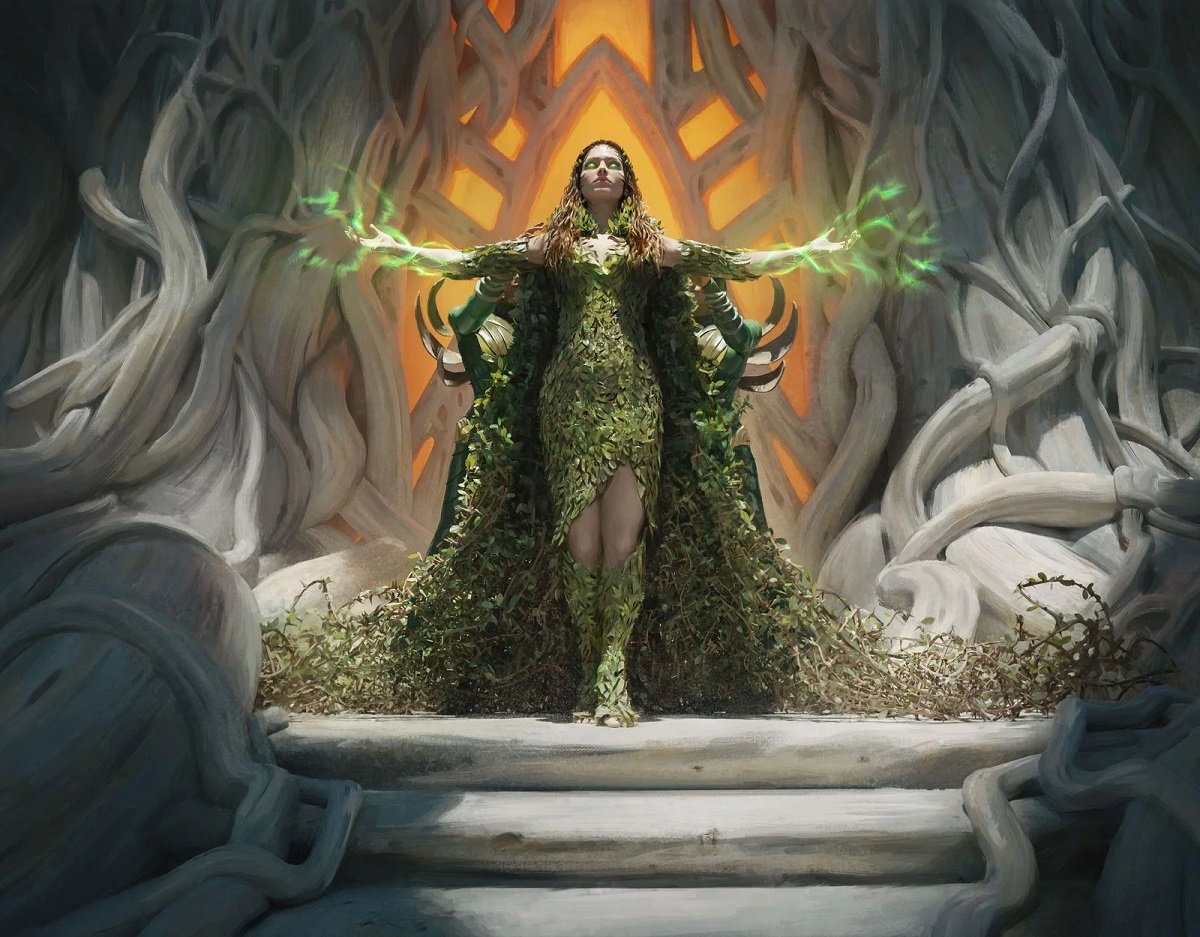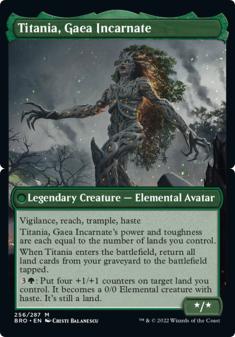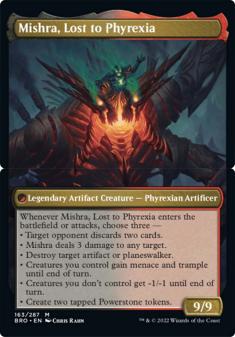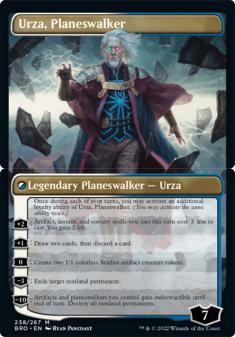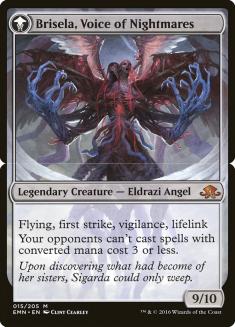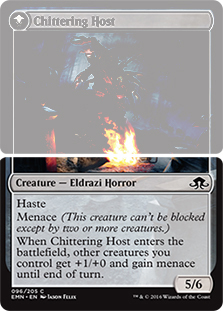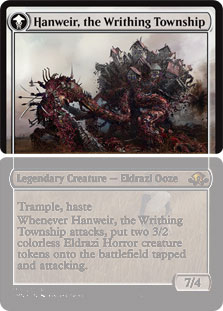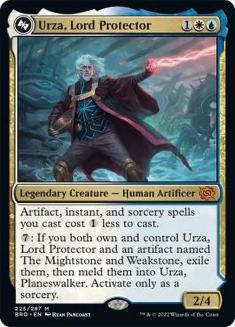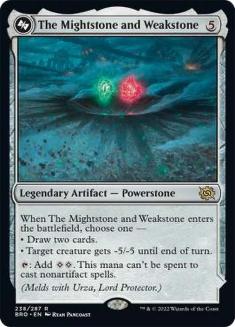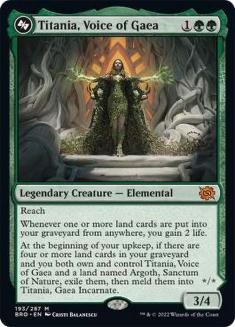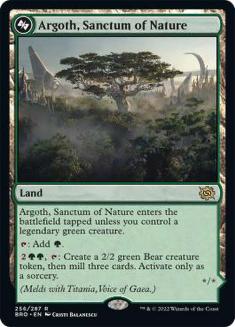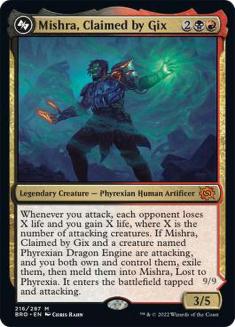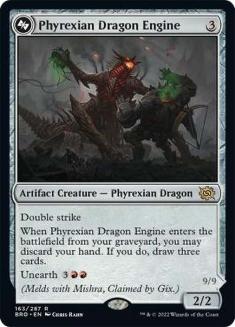Happy November, gamers! With the spooky season over and The Brothers’ War imminent, it’s time to turn our attention back to new card previews. For however you may feel about the volume of new cards that we’re getting these days, I’m still personally more excited to see new Cube goodies than I am for the coming holiday season. I had a delightful Cube session last Saturday, and I’m hoping to host more in the coming months. The Brothers’ War is already offering plenty of cards that I’m excited to sleeve up at my kitchen table, with the return of meld marking the, ahem, biggest cards in the set.
All of these cards are bonkers, though I wouldn’t say that any of them are easy to get onto the battlefield. Aspirational and powerful game pieces like these can make for very exciting Cube experiences, and today I’ll talk about how to approach meld as a mechanic in Cube, followed by giving some more specific attention to all of these new cards and where they might fit.
A History of Meld
Meld debuted back in Eldritch Moon in the form of some really horrific giant Eldrazi monsters. I’ve looked at and experimented with all three of these meld pairs in a number of different Cube environments, though I will say that the difficulties inherent in actually melding these cards means that I haven’t actually spent too much time looking at these card backs.
The difficulty in assembling a melded monstrosity as a player is twofold. First, you must get both pieces into your draft pool. The larger the Cube size, the more difficult this feat is. This is the same draft experience as any A plus B combo, though typically when you encounter such combos in Cube there are interchangeable pieces and they win the game on the spot. Meld doesn’t promise the latter, and doesn’t in any way facilitate the former.
The other difficulty in melding is the question of the power level of the individual cards. Bruna, the Fading Light and Graf Rats both stand out as being particularly bad rates as individual cards. Gisela, the Broken Blade and Midnight Scavengers are also a little weaker than cards you would typically see in the sorts of Cubes that support similar cards, but there’s at least some appeal to them. They’re not strong enough for it to be exciting to play both though. Hanweir Garrison is the standout of the original lot in terms of power level, but Hanweir Battlements is a colorless land without much upside, which means that none of the three original meld pairs ever felt especially worth supporting.
House Rule?
The difficulty in drafting the pairs can be addressed with a house rule. You could just say that if you draft Hanweir Garrison, you get to add Hanweir Battlements to your pool. My experience has been that rules like this shatter verisimilitude. That’s kind of a fart-sniffing word, but if you want to design great Cubes, I recommend becoming familiar with it. The upshot is that getting bonus cards with a draft pick feels like you’re accessing something outside the game and cheapens the feel of the draft. If you really want to see a card melded, then a house rule goes a long way in accomplishing that goal. Just don’t be surprised when players groan at losing in this context.
My belief (and, as with all things Cube, your mileage may vary) is that individually draftable and playable cards would lead to the best experience drafting and playing with meld a mechanic. Now let’s take a look at the new options from The Brothers’ War and assess them using these metrics.
Urza, Planeswalker
I’ll start with Urza, Planeswalker. Despite it being the most exciting melded card of the lot, I see both halves as being the weakest individual cards of the new meld pairs. The Mightstone and Weakstone is a cool card, but ultimately it’s a five-mana spell that gives you your choice of two effects that are individually worth about two-and-a-half mana, along with a mana rock that’s too specific to be powerful in most environments. Urza, Lord Protector is mostly a more expensive two-color Baral, Chief of Compliance. I can conceive of an environment that really takes advantage of the mana reduction that the card offers, but it does feel that forcing you to play white is a downside more often than not.
The problem I’m having is that when I read Urza’s text box, I think Storm, but then when I think about putting a three-mana creature that costs white mana into my Storm deck that isn’t Monastery Mentor, I’m off it pretty quickly. Maybe Monastery Mentor and cards like Fractured Identity do give enough reason to include Urza in higher-powered Cubes. The Mightstone and Weakstone does look a lot more powerful when you cast it with Mishra’s Workshop, after all. I’m skeptical, but it’s worth a try.
When you look at lower-powered Cubes, it’s much easier to justify playing the individual halves of Urza, but then actually melding the card starts to look completely absurd compared to the opposition. Controlling an Urza, Planeswalker is undoubtedly a longtime dream of many fans of Magic’s lore, which makes trying these cards in Cube more than worthwhile. I just see the question of where and how Urza fits to be difficult to answer.
Titania, Gaea Incarnate
Titania immediately has a leg up over Urza by virtue of being mono-color. Admittedly, Titania, Voice of Gaea doesn’t read much better than Urza, Lord Protector, but self-mill is an appealing Cube strategy that fits well into green. It’s also noteworthy that the lifegain ability triggers off a land being put into your graveyard from anywhere, which offers some upside with looting and fetchlands. If nothing else, Titania actually looks quite strong against aggressive decks.
Argoth, Sanctum of Nature just seems like a good card. Drafting a mono-color land isn’t generally exciting and there is some concern about the land entering the battlefield tapped, but the 2/2 token and the self-mill are both potentially meaningful upsides to have on a land, and tapping for green mana rather than colorless gives this one a leg up over Hanweir Battlements. I’ll also point out that green “legendary matters” is something that we’ve been getting a slow trickle of lately, with Kolvori, God of Kinship on my Cube bucket list, in a similar space with Mox Amber. I have my Oviya Pashiri, Sage Lifecrafter and Rhys the Redeemed on deck and just waiting for their time to shine.
Some kind of legendary package being where Titania fits is one answer, and another more concrete example is that these cards are going in my Spooky Cube. The body, the lifegain, and the self-mill on the individual cards all play in that environment, and I’m very excited about the idea of executing the meld.
Mishra, Lost to Phyrexia
Finally, we come to my pick for the best execution of meld that we’ve seen for Cube purposes, and the pair that I expect to see in the most Cubes going forward. Mishra, Claimed by Gix and Phyrexian Dragon Engine are both just solid rates for aggressive decks, and the support that we’ve seen for aggressive black decks in Cube lately goes a long way in ensuring that both of these cards are worth playing individually. When the meld ability is just gravy, it’s easy to justify featuring both cards in a Cube.
As a three-mana creature, there’s nothing super-exciting about Phyrexian Dragon Engine. The fact that you can play it in non-red decks is a draw, I suppose, but ultimately the unearth ability puts the card over. Great red decks curve out well and then can use their mana effectively into the late-game when their curve out plan fails. In that way, Phyrexian Dragon Engine is reminiscent of Earthshaker Khenra, an all-time great in red. The unearth ability is also quite significant as a form of recursion to make pulling the meld off easier. We do want to actually see the big card after all!
Mishra, Claimed by Gix is similar enough to Hellrider (and much harder to kill) that it’s easy to see where the card will play well. Mishra is a big deal for Bitterblossom and Goblin Rabblemaster alike. Seeing as you’re very likely to win on the spot when you pull off the meld, I would say that these cards are most at home in a higher-powered Cube, though there is an assumption baked in to that assessment that the Cube supports red and black aggressive decks independently, and likely that a sacrifice theme is afoot as well. Of course, these boxes are quite easy to check these days. That makes Mishra the perfect blend of aspirational, exciting, and most importantly, realistic. I can’t wait to get my hands on this one.
I Meld
Meld is a mechanic that I’ve been intrigued by since it was first introduced but have struggled to implement satisfyingly to this point. It looks like The Brothers’ War is going to change that. There are hoops to jump through, of course, but the new batch looks much more enticing than the old. I’m not anticipating any of these cards making my Top 10 list once we have the full preview available, but these cards definitely deserve some specific attention, so I was glad to write this piece. I hope you liked it, and I’ll be back soon with more looks at the impact of The Brothers’ War on the world of Cube!

